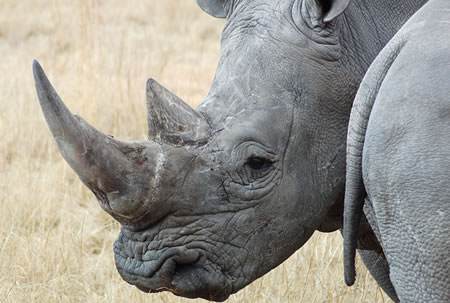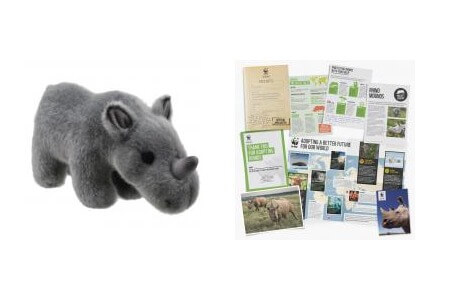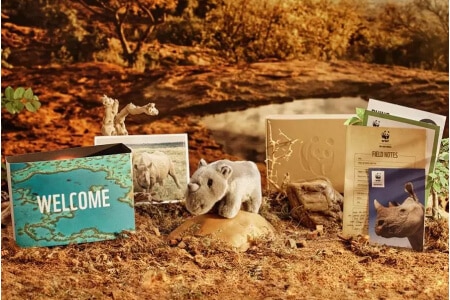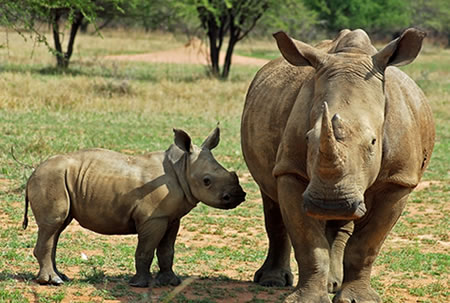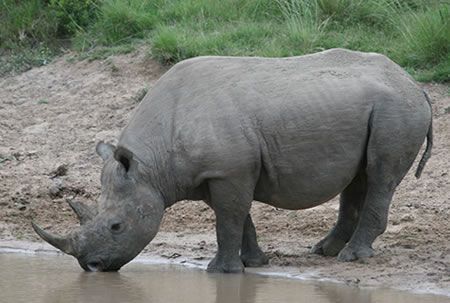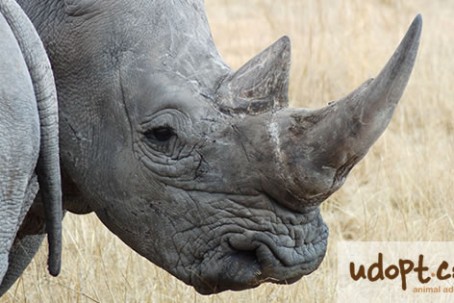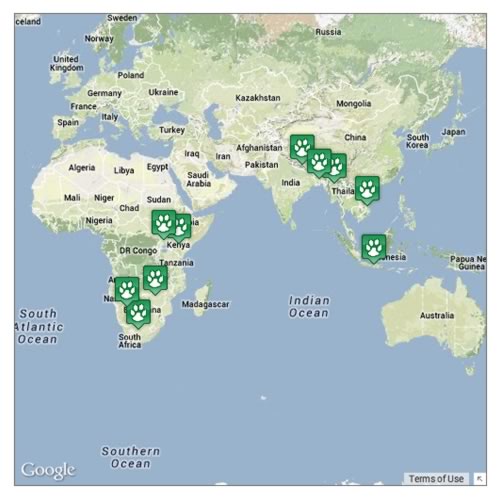Adopt a rhino and receive
 A cuddly toy of your rhino.
A cuddly toy of your rhino.- A factbook on your rhino together with bookmarks and stickers.
- A certificate to frame your commitment to the WWF (printed on recycled paper).
- Two exclusive magazines: WWF’s ‘Wild World’ and ‘My Rhino’ with news and updates for your adopted animal.
udopt'r choice
Rhinos are solitary creatures, which like to spend time alone unless mating. They are very territorial and mark out their areas using dung to ward off other rhinos! They like to live in wooded areas and are very inquisitive of intruders into their territory. Their horn is put to good use if they feel under threat.
udopt it because
- 96% of all rhinos were slaughtered by poachers between 1970 and 1992.
- Your kind donation will help WWF to stop the illegal trade in rhino horns and help them try and preserve these incredible creatures habitat before it’s too late.
- It’s great as a last-minute gift as the gift certificate can be printed or emailed immediately following payment.
- Adoption programmes start from as little as £3.00 a month.
>> Adopt a Rhino Today
Adopt a Rhino Gallery
WWF Adopt an Animal Information
Since 1961 WWF have been advocating and giving a voice to the animal kingdom. Recognised for their work internationally udopt is proud to feature WWF animal adoptions programmes. Adopt and you will receive a gift pack including a cuddly toy (or a personalised book with a Tiger adoption), a certificate plus lots more. You'll also get regular updates throughout the year.
https://wwf.org.uk/UK Registered Charity Number 1081247
Delivery information
By Post :
FREE Delivery Your gift pack will be delivered within the UK FREE of charge. Your package will be sent out within 2 business days, but please allow up to 5 days for delivery.
Last Minute Gift? :
Left it until the last minute? The good news is you can still receive a gift certificate to print or email up to the big day! You will then receive the gift pack within 10 days of ordering!
Did you know?
- Rhinos can grow to over 6 feet tall and can run at speeds of up to 35mph.
- The longest ever recorded horn was an astounding 4ft 9inches!
- Rhinos wallow in mud and let it dry to create their own form of sun block.
- A black rhino can last up to 5 whole days without water, but it would be pretty grumpy!
Our rhino says…
I’m a black rhino and I desperately need your help. My home is Kenya where poachers have hunted most of my friends and family for human uses. It’s so bad that there are now only 500 of us left alive, and unless something is done we will become extinct very soon. Please adopt me today and help WWF to stop the illegal trade in my horn, it looks much better on my face than it does ground down and sold as medicine.


